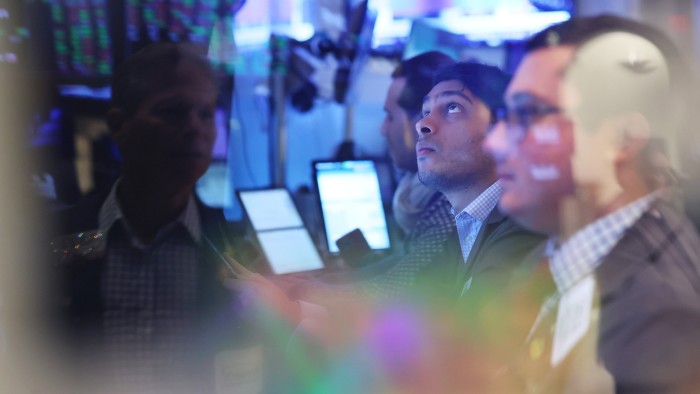Unlock the Editor’s Digest for free
Roula Khalaf, Editor of the FT, selects her favourite stories in this weekly newsletter.
The writer is president of Queens’ College, Cambridge, and an adviser to Allianz and Gramercy
While there has understandably been a lot of focus on the unusual financial market volatility of recent months, I have been intrigued by something else — the instability in the consensus economic narrative.
The high confidence in American economic exceptionalism reached its consensus peak at the January meeting of the World Economic Forum at Davos. Sentiment then violently swung into deep pessimism about a recession and the fragmentation of the global order. The mood is now in a muddled middle terrain.
Markets have reflected those swings, both in the magnitude of moves and breaks with long-standing historical correlations. In just the last three months, the S&P index fell almost 20 per cent from its peak in February only to rebound nearly 14 per cent during the past four weeks. The Vix, popularly known as “fear index” of traders, has been on a wild rollercoaster ride while the yield on the 10-year US government bond, often referred to as the global benchmark, has fluctuated within a range of 0.80 percentage points since February.
Over the same period, there was at times a reversal of the usual correlation of a stronger dollar and lower US Treasury yields to increased demand for haven assets in times of turmoil. And then in the second week of April, there was a scare that made other developments pale in comparison when liquidity — that is, the basic ability to trade — became unsettlingly patchy in certain segments of the US government bond market.
Many will point to the volatility in US tariff policy as the main cause. After all, on-and-off tariff implementation has been accompanied by questions on what drivers for this major policy initiative will prevail. Will it be the desire for revenue generation and the reshoring of the manufacturing industry? If so, that would suggest a permanency of high tariffs. Or will it be the desire for a fairer trading system? That would support the view that the tariff measures were made in a “escalate to de-escalate” mode..
Policy volatility is also seen by many as the driver of the violent swings in the consensus economic narrative. The deep conviction that American economic exceptionalism will deliver growth suddenly gave way to worries over a recession, potentially involving a period of stagflation along the way.
The characterisation of America’s influence on the global economy went from the engine of growth to the caboose. Faith that globalisation will continue, albeit in a more managed way, gave way to fears over fragmentation. Many more doubts were expressed on what not so long ago was a seemingly indestructible trust in the dollar as the world’s reserve currency and reliable US financial markets as the recipient and manager of other countries’ savings.
Don’t get me wrong — the volatility in tariff policy has been a contributor to both unusual financial market fluctuations and eye-popping swings in the consensus economic narrative. But rather than view this as a basic cause, it is analytically more useful to think of the tariffs as an accelerant of structural shifts that are likely to persist.
The failure of individual countries to grow in a consistently strong, inclusive and sustainable manner has increasingly pulled the rug from under traditional economic management tools while placing the architectural stability of the global system at risk, especially as politics has displaced economics and finance as the driver of policy formulation. Narrowly-optimised cross-border supply chains have added to the vulnerability of the global economy to lower growth and higher inflation. And too many years of deficit and debt neglect, as well as central bank over-reach, have reawakened the bond market vigilantes that traditionally punish fiscally undisciplined countries.
Recent market developments are a loud reminder that structural forces have been long in play and could prove increasingly hard to tackle even with exciting innovations. The risk is that instead of reverting to what many regard as “normal,” the global economy ventures further into unknown and uncomfortable territory.
Rather than wait and hope for calm, governments, companies, households and investors should treat this moment as one which requires both corrective actions at home and better co-ordinated international approaches to common problems.
https://www.ft.com/content/e847f03c-3934-44c8-972a-2ded98c058c3


